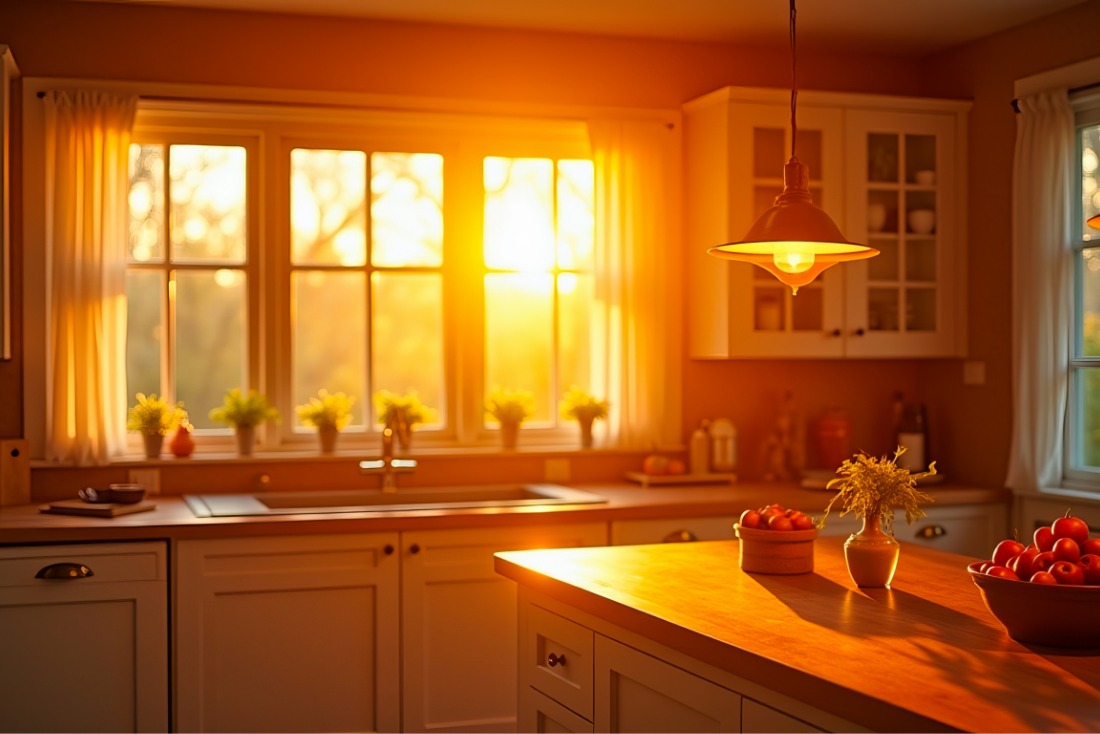LED Light Layers: Creating a Balanced Lighting Plan

You don’t need to be an interior designer to improve your lighting. Most rooms feel better and work better when you use more than one kind of light. That’s where a simple LED lighting plan comes in. By combining different layers of light—general, task, and accent—you can make your space more comfortable, more usable, and more efficient without overspending or overthinking it.
Whether you’re setting up a home office, remodeling a kitchen, or just replacing bulbs in a living room, understanding these lighting layers can help you get better results with your LED upgrades.\
What Are Lighting Layers?
When we talk about “lighting layers,” we’re really just breaking a space down by what kinds of light are doing what jobs. Most rooms need a combination of:
- Ambient light, which lights up the whole room evenly
- Task lighting, which focuses light on a work area (like a desk or countertop)
- Accent lighting, which highlights specific features like shelves or artwork
Each one plays a different role. When you combine them correctly, the room looks brighter, more balanced, and more comfortable. And when you use LED lights for each layer, you’ll use less energy and replace bulbs far less often.
Ambient Lighting: Your Starting Point
Ambient lighting is the base layer—the light that fills the room when you walk in and turn on the main switch. It comes from ceiling-mounted fixtures, recessed lights, or central light kits on ceiling fans. In most homes, ambient lighting is what people think of as “overhead light.”
LEDs are a great fit for ambient lighting because they provide consistent brightness without wasting energy. You’ll want to choose bulbs with a wide beam angle to spread light evenly. For common areas like living rooms or bedrooms, soft white (around 2700K–3000K) often works well. For kitchens or garages, a brighter “daylight” color (4000K–5000K) is usually better.
Task Lighting: Focused and Functional
Task lighting is all about directing light where you need it most—at a desk, over a kitchen counter, or next to your favorite reading chair. It’s not about lighting the whole room, just the areas where detail matters.
Desk lamps, under-cabinet lights, and LED strip lighting are common task lighting solutions. When choosing LEDs for this layer, look for high lumen output and a beam angle that focuses the light rather than spreads it too wide. For tasks like cooking or working at a bench, cool white LEDs around 4000K offer good visibility without being too harsh. If it’s for reading or relaxing, a warmer tone might be more comfortable.
Accent Lighting: Small Touch, Big Impact
Accent lighting highlights certain parts of a room without changing how it functions. Think shelf lights, toe-kick lighting in kitchens, or LED strips behind a TV. This layer doesn’t need to be bright—it just adds contrast, warmth, or visual interest.
LEDs are perfect for accent lighting because they come in flexible formats and low wattages. They’re small enough to hide behind trim or along stair treads and can run for hours without overheating. Color-changing LEDs or dimmable models work great in this layer if you’re looking to add a little mood lighting or draw the eye to something special.
Why Use All Three Layers?
Using all three types of lighting might sound like extra work, but it actually makes rooms more usable and helps avoid the “too bright” or “too dim” problem. Instead of trying to get one bulb to do everything, you let each type of light do a specific job.
The best part? LEDs make this approach more affordable and lower maintenance. Since they use less power and last for years, you don’t have to worry about running multiple lights at once or constantly replacing bulbs. Plus, most LED fixtures are now compatible with smart systems or dimmers, giving you even more control over brightness and energy use.
Making Your Own LED Lighting Plan
You don’t need to draw blueprints to plan your lighting. Just take a quick walkthrough of your space and ask a few questions:
- Is the room evenly lit right now?
- Are there areas where I do tasks that feel too dark?
- Are there any features—like shelves, artwork, or architectural details—I want to show off?
Once you know what’s missing, you can decide which layer to add. For example, if your kitchen has a bright ceiling light but the counters are dim, under-cabinet task lighting will make a huge difference. If your living room feels flat in the evening, a few accent lights behind furniture or in shelving might bring it to life.
Choosing the Right LED Products
When you shop for LED lighting, it helps to know which products work best for each job. Here’s a quick way to think about it:
- Ambient: Ceiling-mounted fixtures, flush mounts, LED panels, or high-output bulbs
- Task: Desk lamps, under-cabinet strips, directional fixtures
- Accent: Puck lights, LED strips, color-changing smart bulbs
Whatwatt carries LED options for every layer, including hard-to-find bases and high-CRI models that show colors more accurately. Whether you’re adding one light or planning a full home upgrade, we’re here to help you find the right fit.
Need Help With Your Lighting Plan?
Not sure what to buy? Give us a call and we’ll walk through your space together. Whether you’re dealing with a small room or a full office, we’ll help you build a simple, effective LED lighting plan that works. And don’t forget to check out our Bulb Guide to quickly match your fixtures with the right LED bulbs and bases.